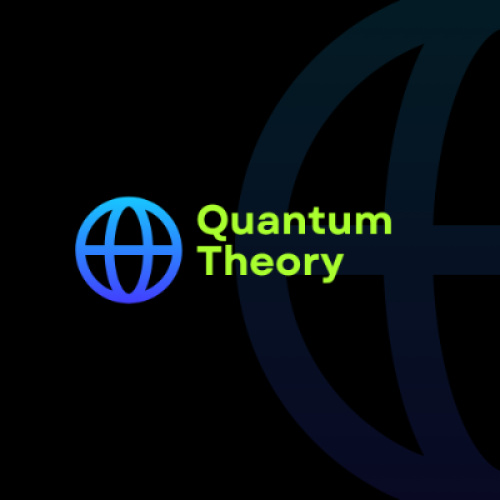Quantum theory is a fundamental branch of physics that deals with the behavior and properties of extremely small particles, such as electrons, protons, and photons. This theory was developed in the early 20th century and revolutionized many of the conventional concepts of classical physics. There are a few main principles in quantum theory: superposition, quantum entanglement, Heisenberg's uncertainty principle, and quantum tunneling.
The principle of superposition states that a particle can be in more than one position at the same time. For example, an electron can occupy more than one orbit at the same time until we measure it. When measured, it settles to a specific position, known as "quantum collapse". This concept is in stark contrast to what we experience in everyday life, as we usually do not see an object in more than one place at the same time.
Quantum entanglement is a very complex and surprising concept. Two or more particles can be linked in such a way that a change in the state of one particle will instantly change the state of the other, even if they are light-years away from each other. Albert Einstein described this phenomenon as "ghostly activity", as it appears to transfer information at speeds exceeding the speed of light.
According to Heisenberg's Uncertainty Principle, the position and motion of a particle cannot be precisely known simultaneously. If we want to measure the position of an electron very precisely, its motion becomes uncertain, and similarly, if we want to measure its speed precisely, its position becomes uncertain. This principle shows us that there will always be some uncertainty at the fundamental level of nature.
Quantum tunneling is a process in which a particle can pass through a barrier or obstacle, although this is impossible according to classicalphysics. For example, an electron can pass through a low energy wall which according to classical physics it should not pass through. This concept plays an important role in various areas of modern technology, such as semiconductors and superconductors.
Another important aspect of quantum theory is the equations of quantum mechanics. The dinger equation is a fundamental theory that describes the wave function of a particle. This equation is used to calculate the possible states and changes of a system at a given time. These ideas and principles of quantum theory have revolutionized the field of modern technology.Quantum computing, quantum cryptography, and quantum teleportation are some examples.Quantum computers are extremely effective at processing large amounts of data, as they can exist in multiple states at the same time. Quantum cryptography has opened up new horizons in information security, where data encryption and decryption is based on quantum principles. Quantum teleportation is a process of particle or information transfer in which particles or information are transferred instantaneously across distances, although this is currently only theoretically possible.
Quantum theory is a very complex but relevant branch of physics that helps us unravel the deepest mysteries of our microscopic world and plays an important role in the development of modern technology. The application and future prospects of this theory can revolutionize our daily lives and take the advancement of science to new heights.
The principle of superposition states that a particle can be in more than one position at the same time. For example, an electron can occupy more than one orbit at the same time until we measure it. When measured, it settles to a specific position, known as "quantum collapse". This concept is in stark contrast to what we experience in everyday life, as we usually do not see an object in more than one place at the same time.
Quantum entanglement is a very complex and surprising concept. Two or more particles can be linked in such a way that a change in the state of one particle will instantly change the state of the other, even if they are light-years away from each other. Albert Einstein described this phenomenon as "ghostly activity", as it appears to transfer information at speeds exceeding the speed of light.
According to Heisenberg's Uncertainty Principle, the position and motion of a particle cannot be precisely known simultaneously. If we want to measure the position of an electron very precisely, its motion becomes uncertain, and similarly, if we want to measure its speed precisely, its position becomes uncertain. This principle shows us that there will always be some uncertainty at the fundamental level of nature.
Quantum tunneling is a process in which a particle can pass through a barrier or obstacle, although this is impossible according to classicalphysics. For example, an electron can pass through a low energy wall which according to classical physics it should not pass through. This concept plays an important role in various areas of modern technology, such as semiconductors and superconductors.
Another important aspect of quantum theory is the equations of quantum mechanics. The dinger equation is a fundamental theory that describes the wave function of a particle. This equation is used to calculate the possible states and changes of a system at a given time. These ideas and principles of quantum theory have revolutionized the field of modern technology.Quantum computing, quantum cryptography, and quantum teleportation are some examples.Quantum computers are extremely effective at processing large amounts of data, as they can exist in multiple states at the same time. Quantum cryptography has opened up new horizons in information security, where data encryption and decryption is based on quantum principles. Quantum teleportation is a process of particle or information transfer in which particles or information are transferred instantaneously across distances, although this is currently only theoretically possible.
Quantum theory is a very complex but relevant branch of physics that helps us unravel the deepest mysteries of our microscopic world and plays an important role in the development of modern technology. The application and future prospects of this theory can revolutionize our daily lives and take the advancement of science to new heights.





